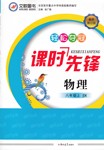题目内容
【题目】假定英语课上老师要求同桌之间交换修改作文,请你修改你同桌写的以下作文。文中共有10处语言错误,每句中最多有两处。每处错误仅涉及一个单词的增加、删除或修改。
增加:在缺词处加一个漏字符号(∧),并在其下面写出该加的词。
删除:把多余的词用斜线(\)划掉。
修改:在错的词下划一横线,并在该词下面写出修改后的词。
注意:1. 每处错误及其修改均仅限一词;
2. 只允许修改10处,多者(从第11处起)不计分。
Last Saturday morning in the railway station, I casual saw something that touched me deeply. Right as I was on way to the main hall, I saw an old woman putting something next to a slept homeless man. I wanted to see that she had put some money there. Instead, I just find a sandwich. The moments was very touching. An old woman just helped the man in need of though her act might not be recognized. This made me realized it’s a small thing that could really make a big difference, I was luck to see such a little act of kindness.
【答案】1.casual→casually
2.on后添加my/the
3.slept→sleeping
4.that→if/whether
5.find→found
6.moments→moment
7.An→The
8.去掉of
9.realized→realize
10.luck→lucky
【解析】
这是一篇记叙文。主要记叙了上个星期六的早晨在火车站,作者目睹一位老太太帮助了一位无家可归的人的故事。
1.考查副词。此处修饰动词saw应用副词casually意为“偶然地”。故casual改为casually。
2.考查代词/冠词。根据短语on my/the way表示“在(我的)路途中”。故on后添加my/the。
3.考查非谓语动词。sleeping在此处作前置定语,修饰名词man。a sleeping homeless man意为“一个熟睡的无家可归的人”。故slept改为sleeping。
4.考查连接词。句意:我想看看她是否在那儿放了些钱。此处为宾语从句,从句中不缺少成分,应用that/if/whether引导,且结合句意表示“是否”故此处应该用if/whether引导宾语从句。故that改为if/whether。
5. 考查时态。根据文章首句中的时间状语“last Saturday morning”可知,此处应该用一般过去时。故find改为found。
6.考查名词单复数。根据下文中的动词“was”可知,此处应该用单数名词“moment”。故moments改为moment。
7.考查冠词。“这位老太太”在上文中出现过多次,故此处应该用定冠词the特指名词“woman”。故An改为The。
8.考查介词。根据短语in need表示“在危难中”,在此处作后置定语,修饰名词man。故去掉of。
9.考查非谓语动词。make在此处是使役动词,意为“使;让”,在主动语态中,只能使用省略to的动词不定式(动词原形)作宾语补足语。故realized改为realize。
10.考查形容词。形容词“lucky”在此处作表语,be lucky to,表示“幸运地3”。故luck改为lucky。

 文敬图书课时先锋系列答案
文敬图书课时先锋系列答案